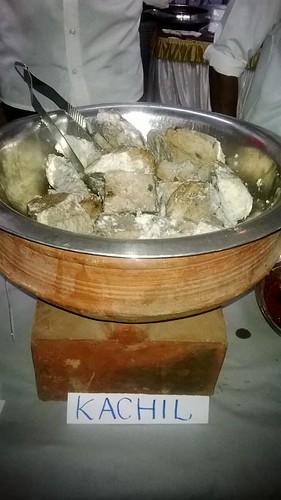Glossary K
Kachil Puzhungiyathu refers to boiled Greater Yam (Kachil) which is one of the popular traditional food from Kerala, India. Kachil is a bit like Kappa (Cassava) in taste, but while Kappa is always available, Kachil is only available depending on the season. It is serve with a spicy Chammanthi or any kind of Curry and great during winter or cold months.
This Kachil Puzhungiyathu picture below was one of the foods sold during Annual Food Festival in Allepey Beach in Kerala in 2013. Annual Food Festival in Allepey in being held during the Christmas Season when many foreign and local tourist visit Allepey. It is participated by the local Restaurants.

Kadalamavu, also known as "gram flour" or "chickpea flour," is a versatile ingredient widely used in various culinary traditions around the world. Derived from ground chickpeas, Kadalamavu boasts a nutty flavor and a rich nutritional profile. In this article, we will explore the significance of Kadalamavu, its culinary applications, potential risks associated with its consumption, historical insights, and legal considerations. We'll also touch upon similar ingredients from different cultures.
